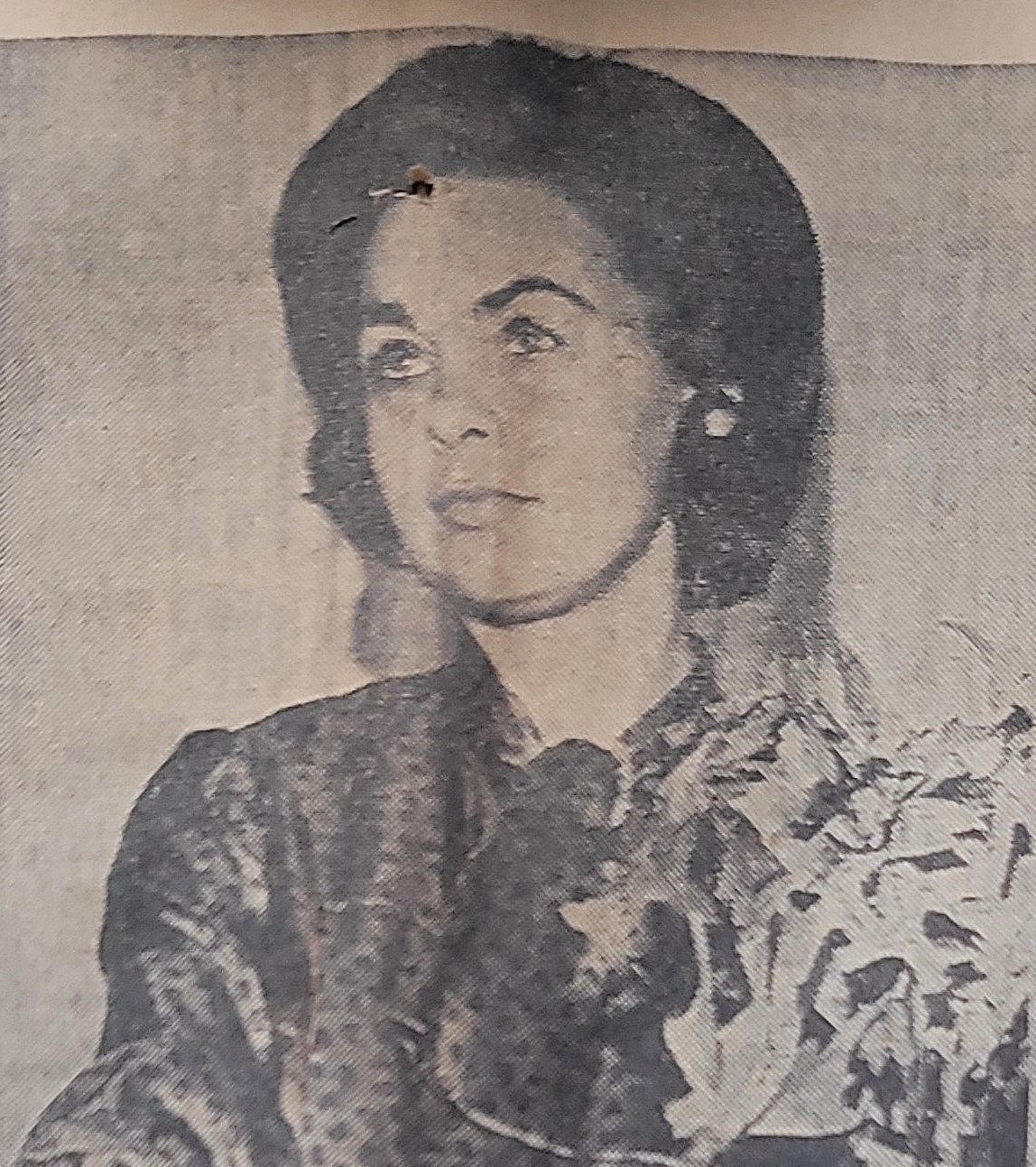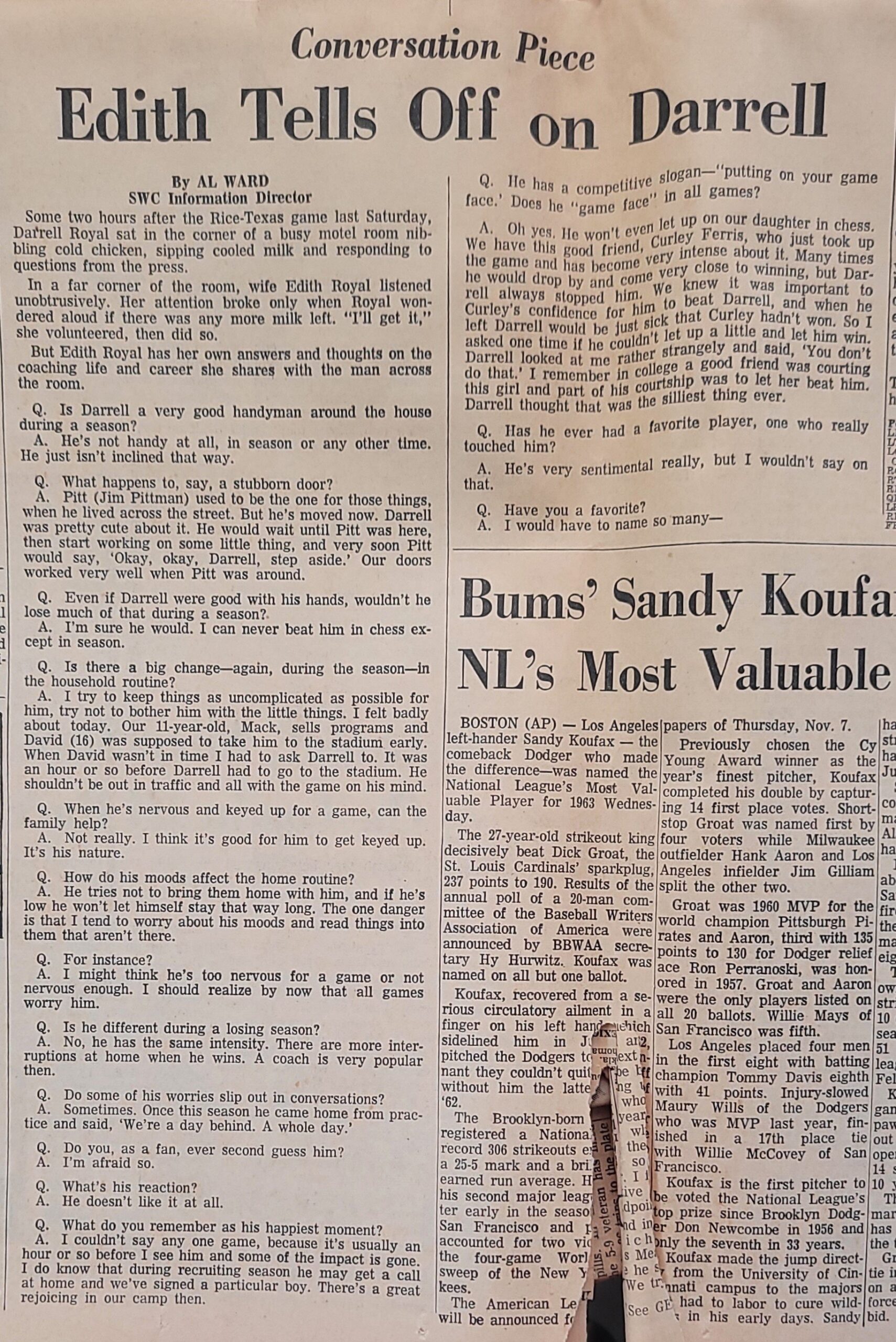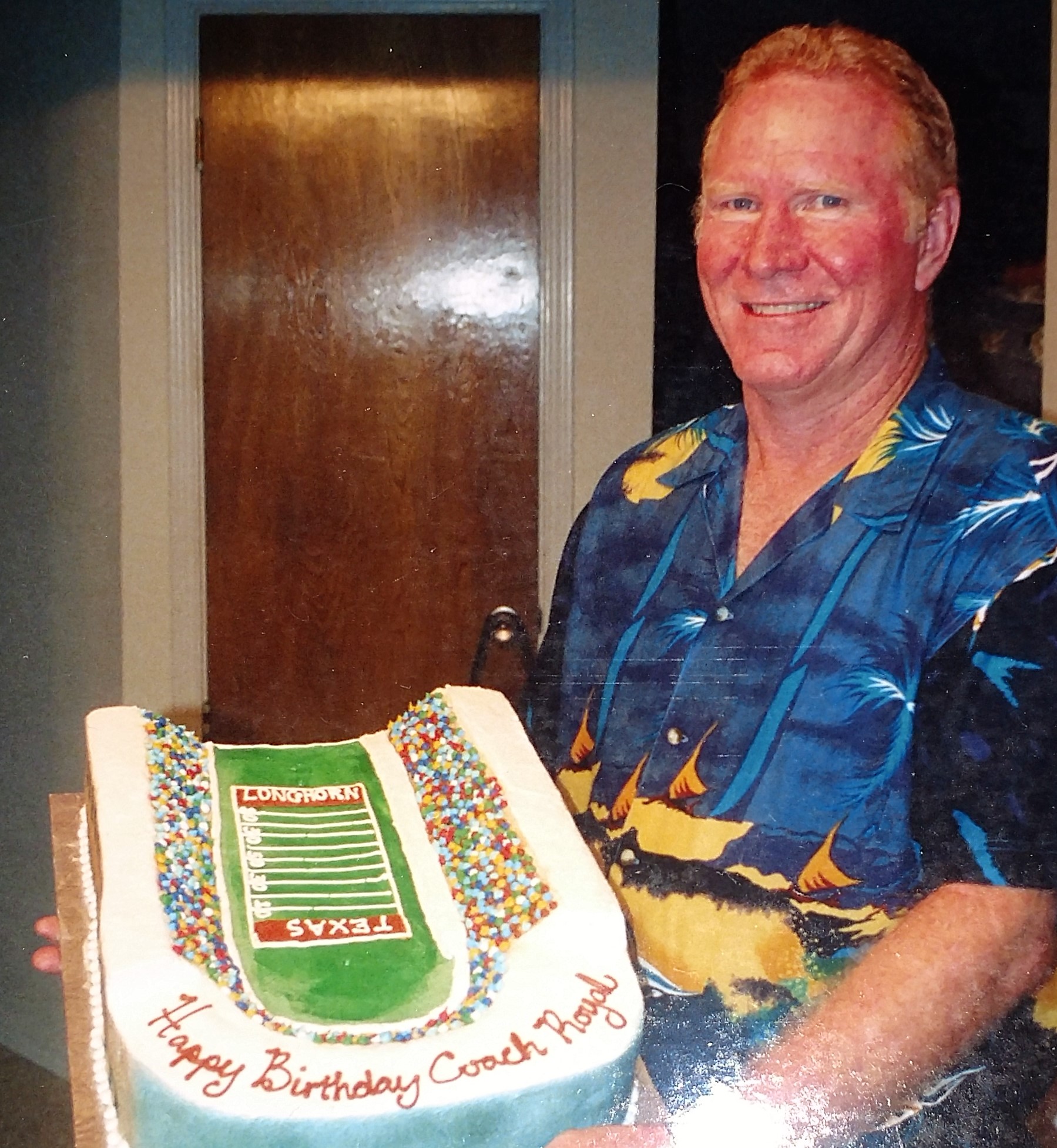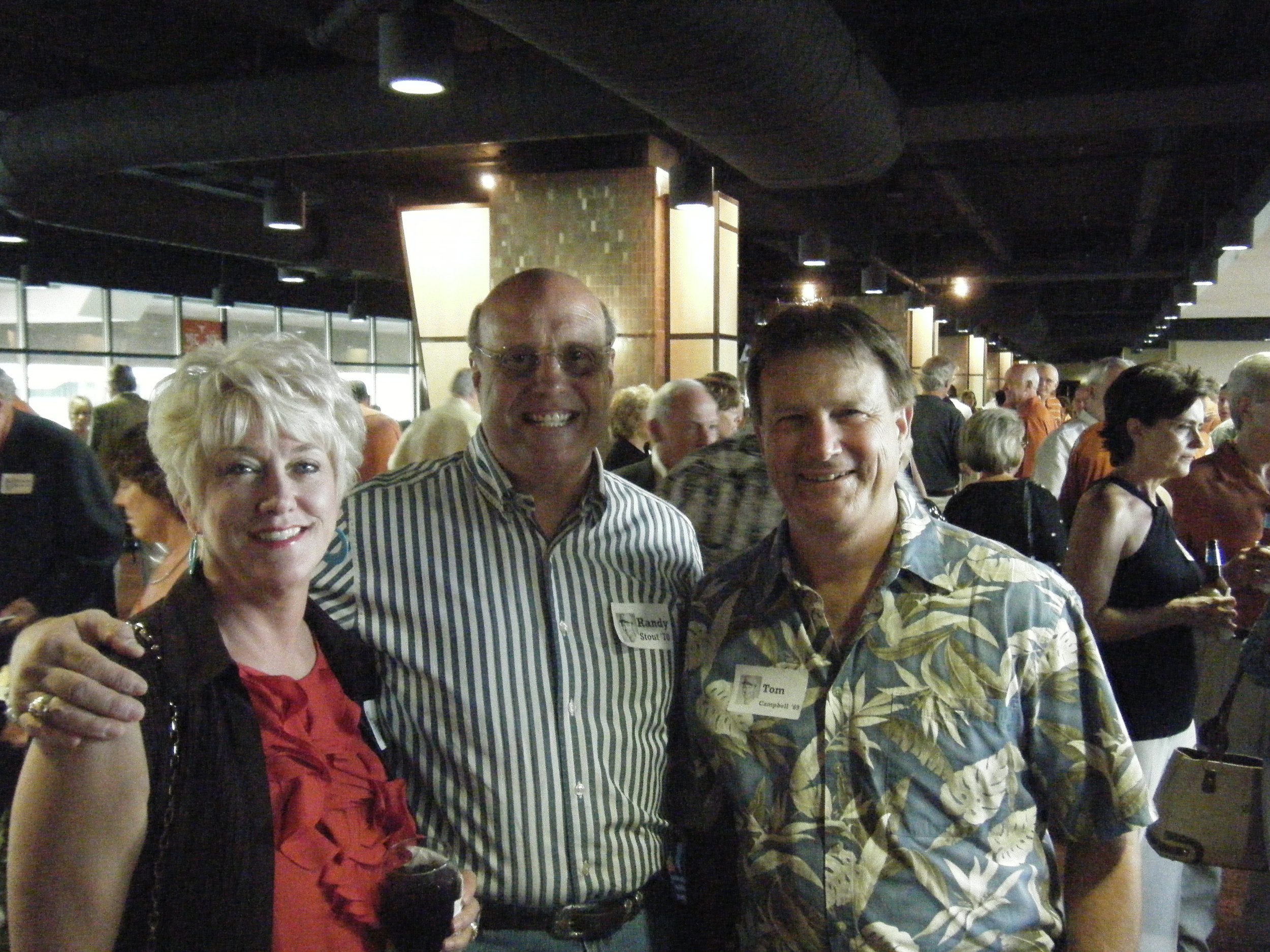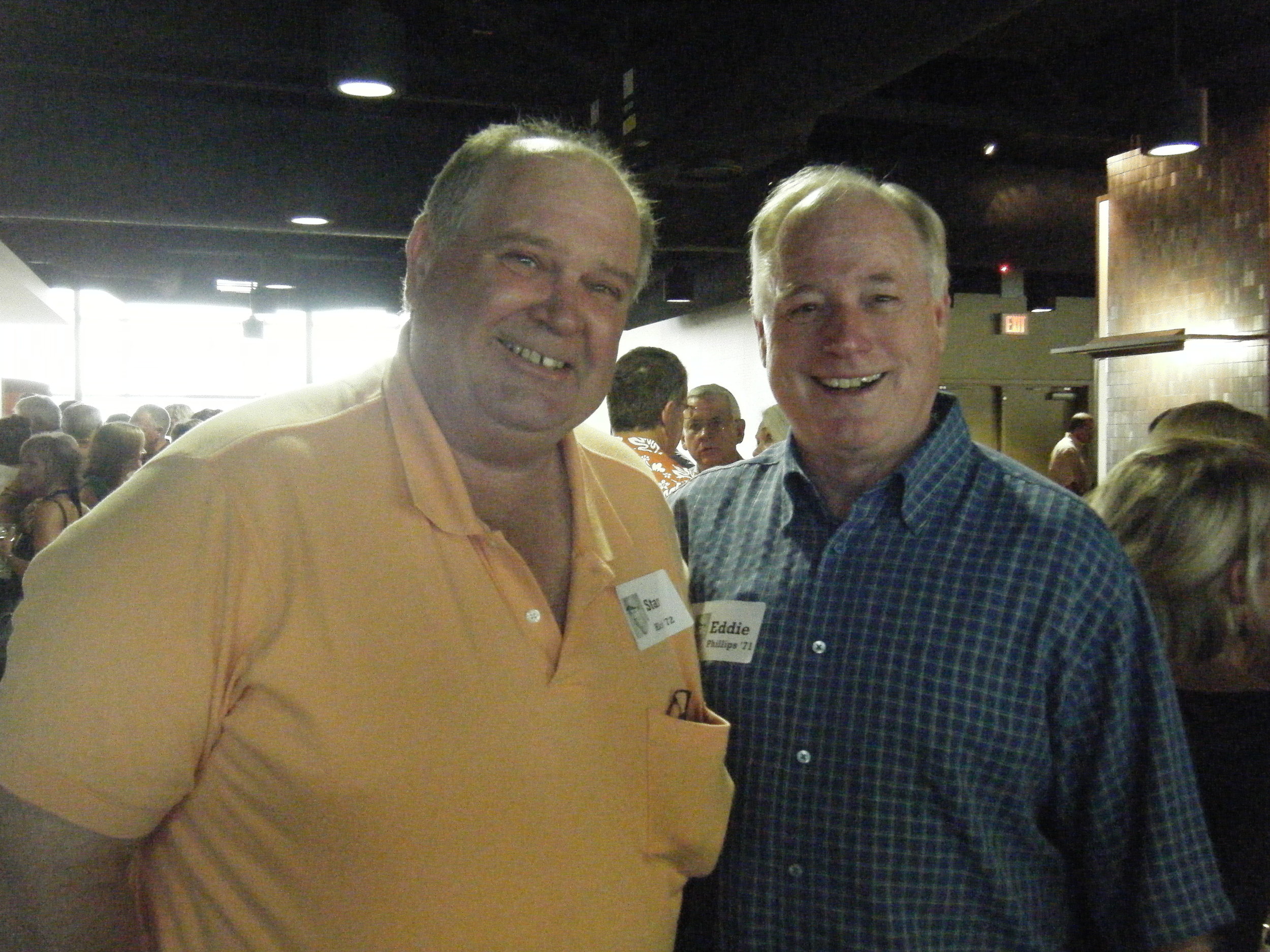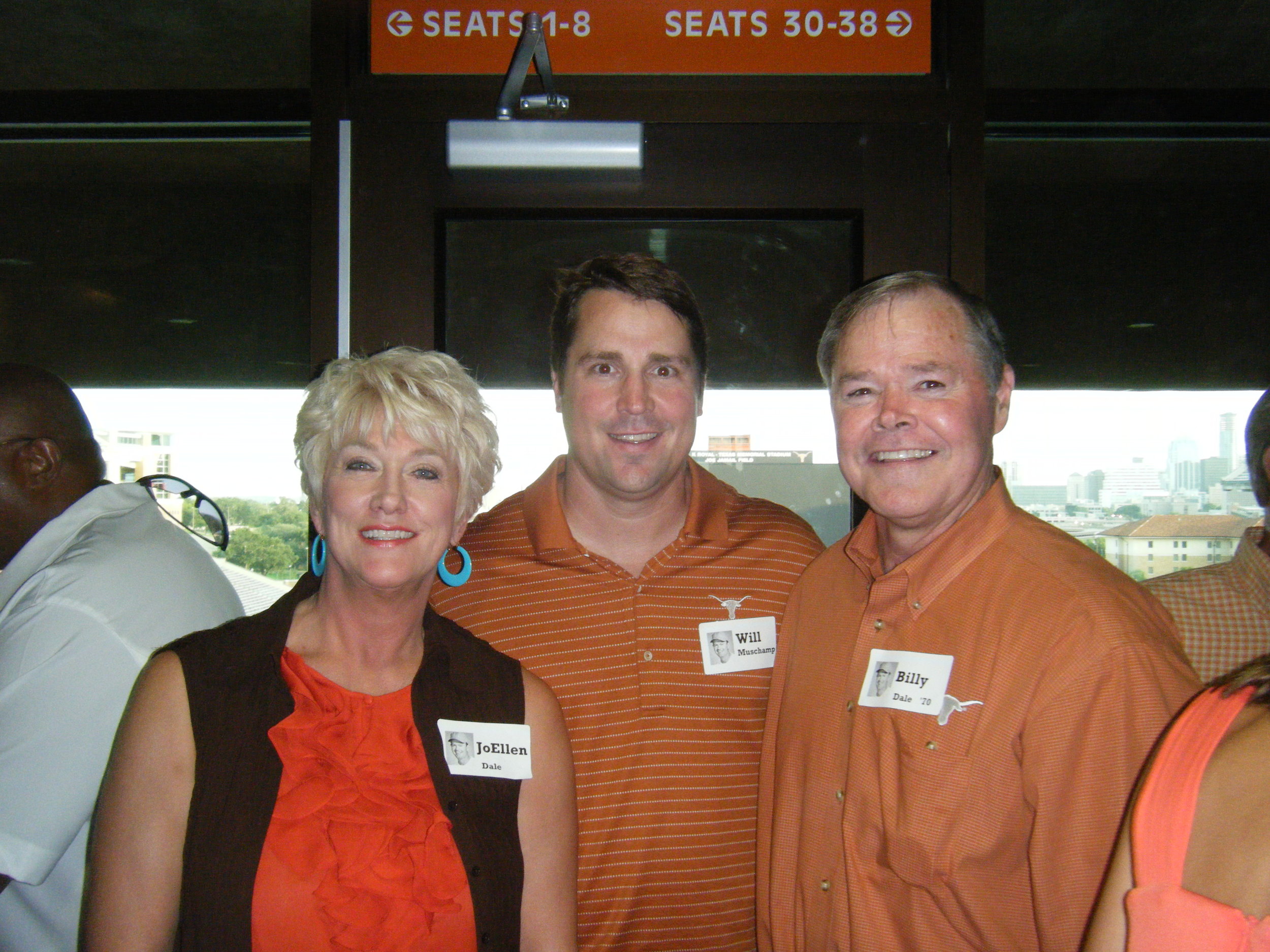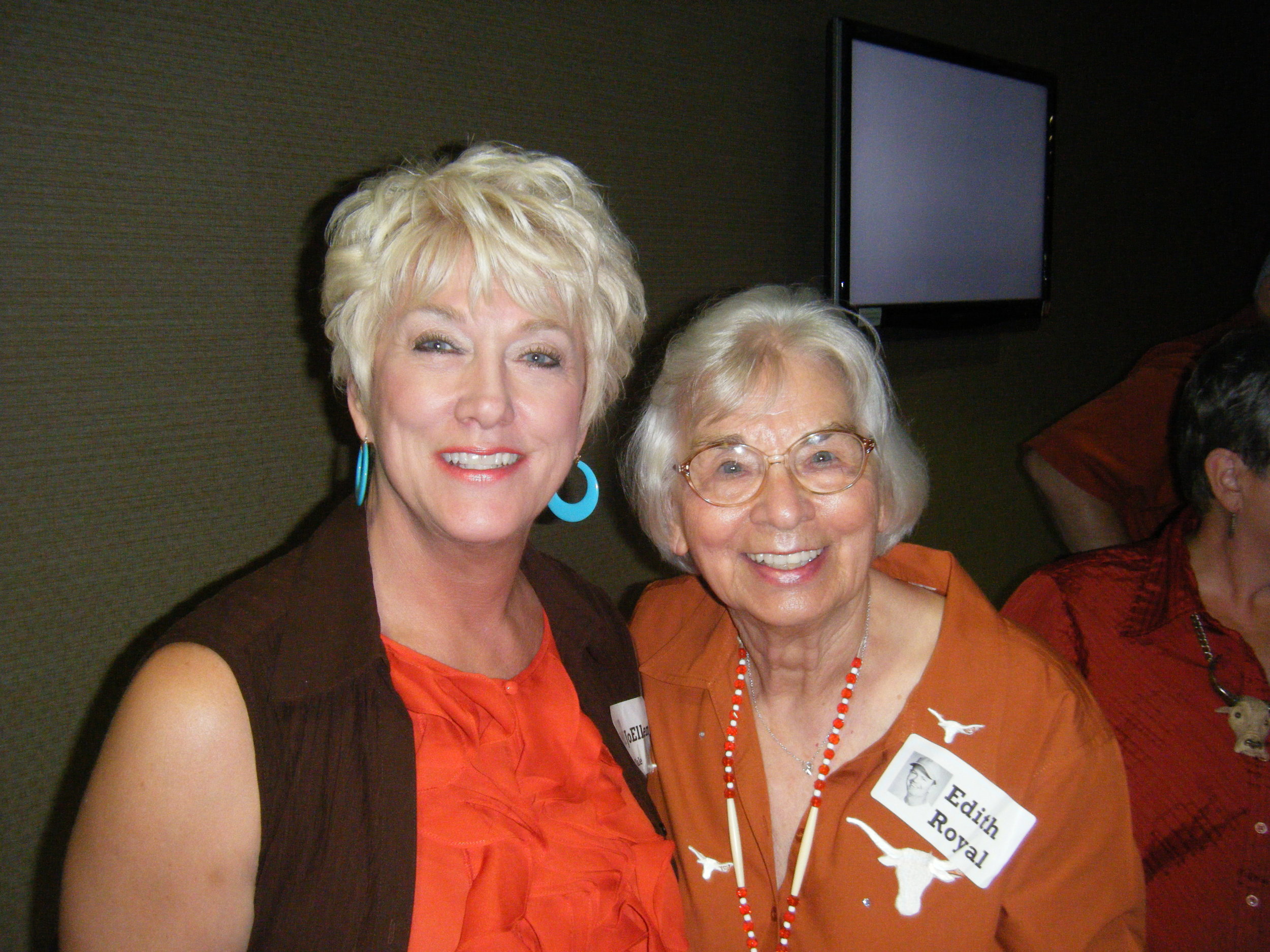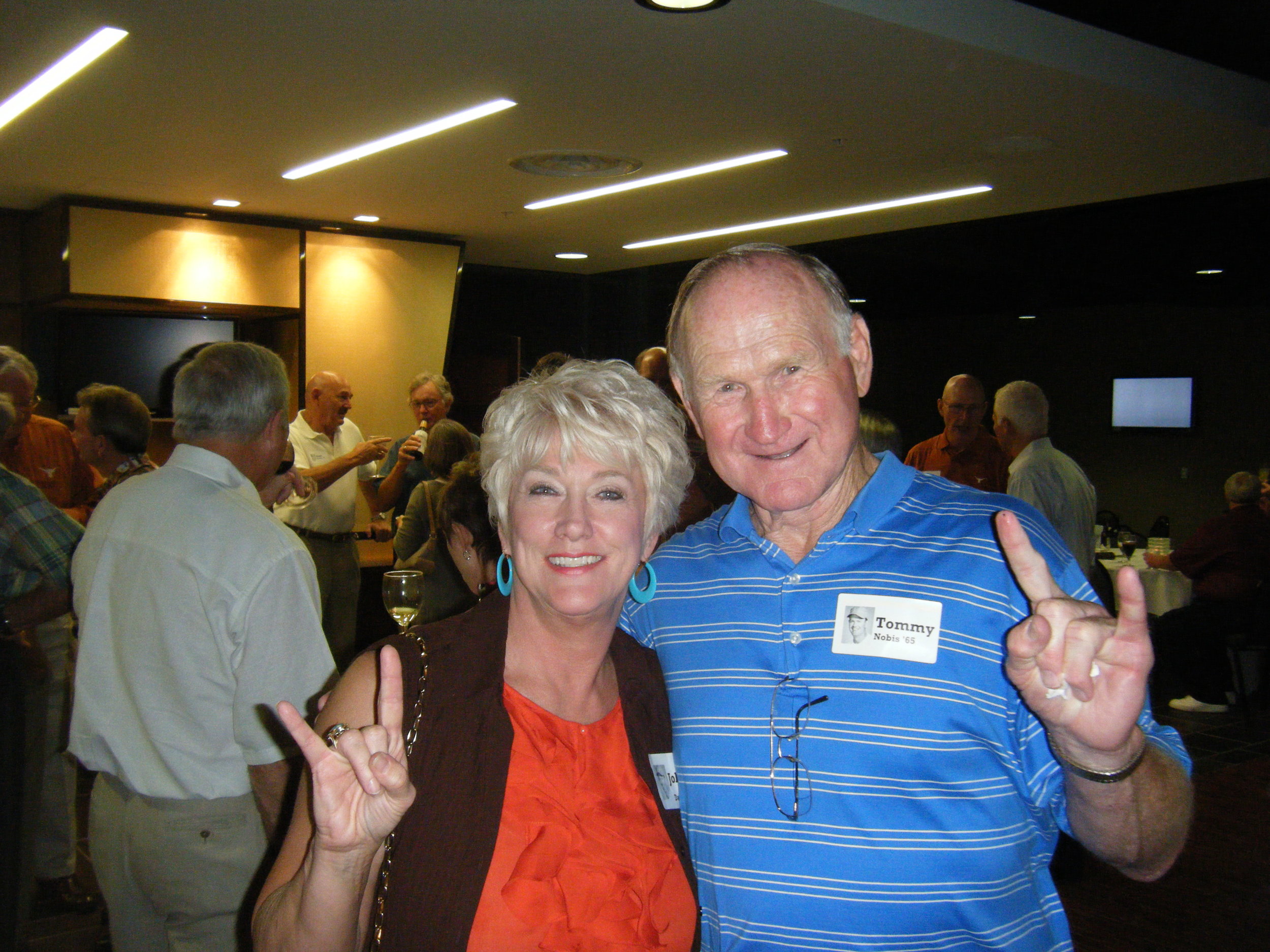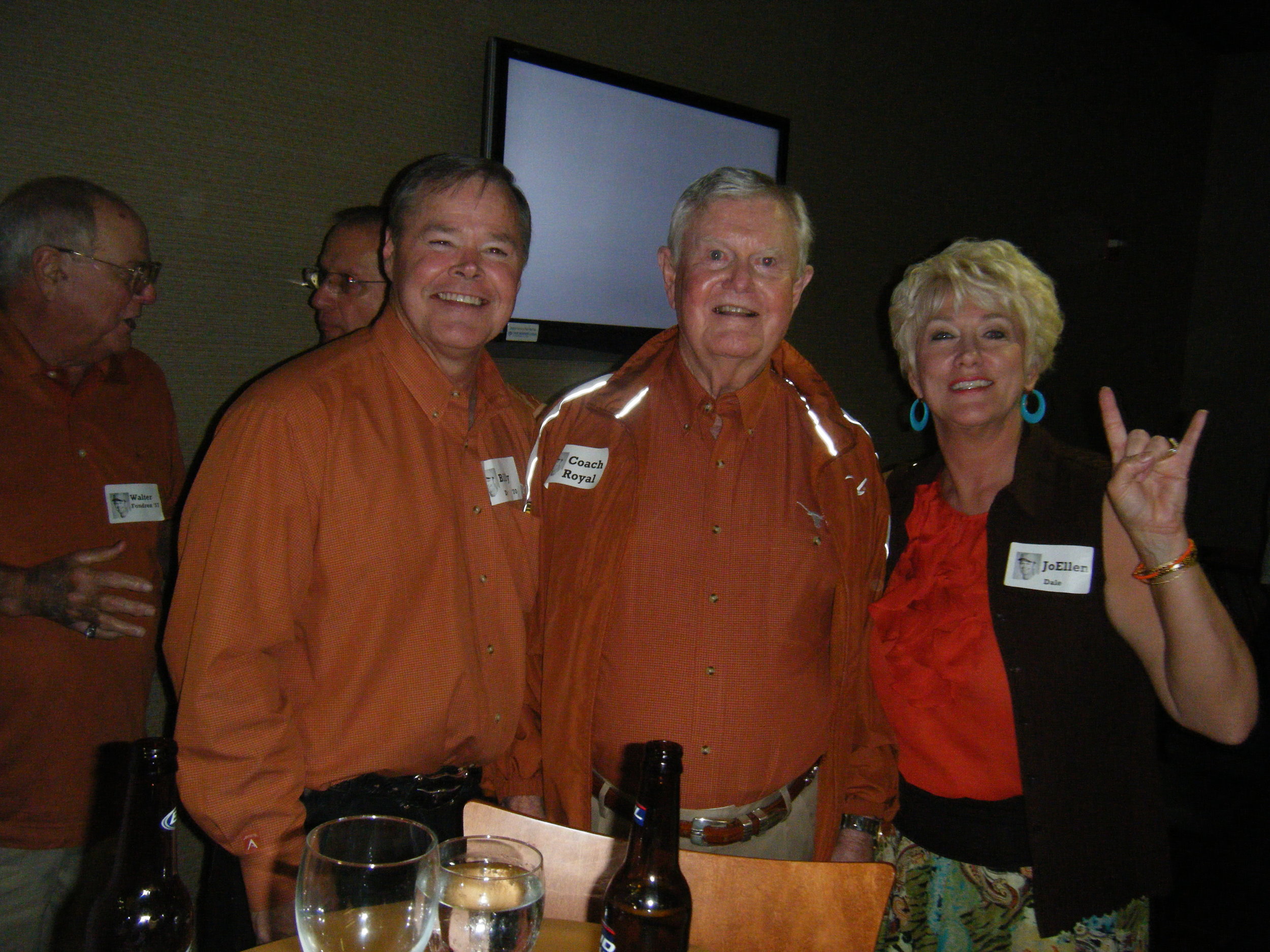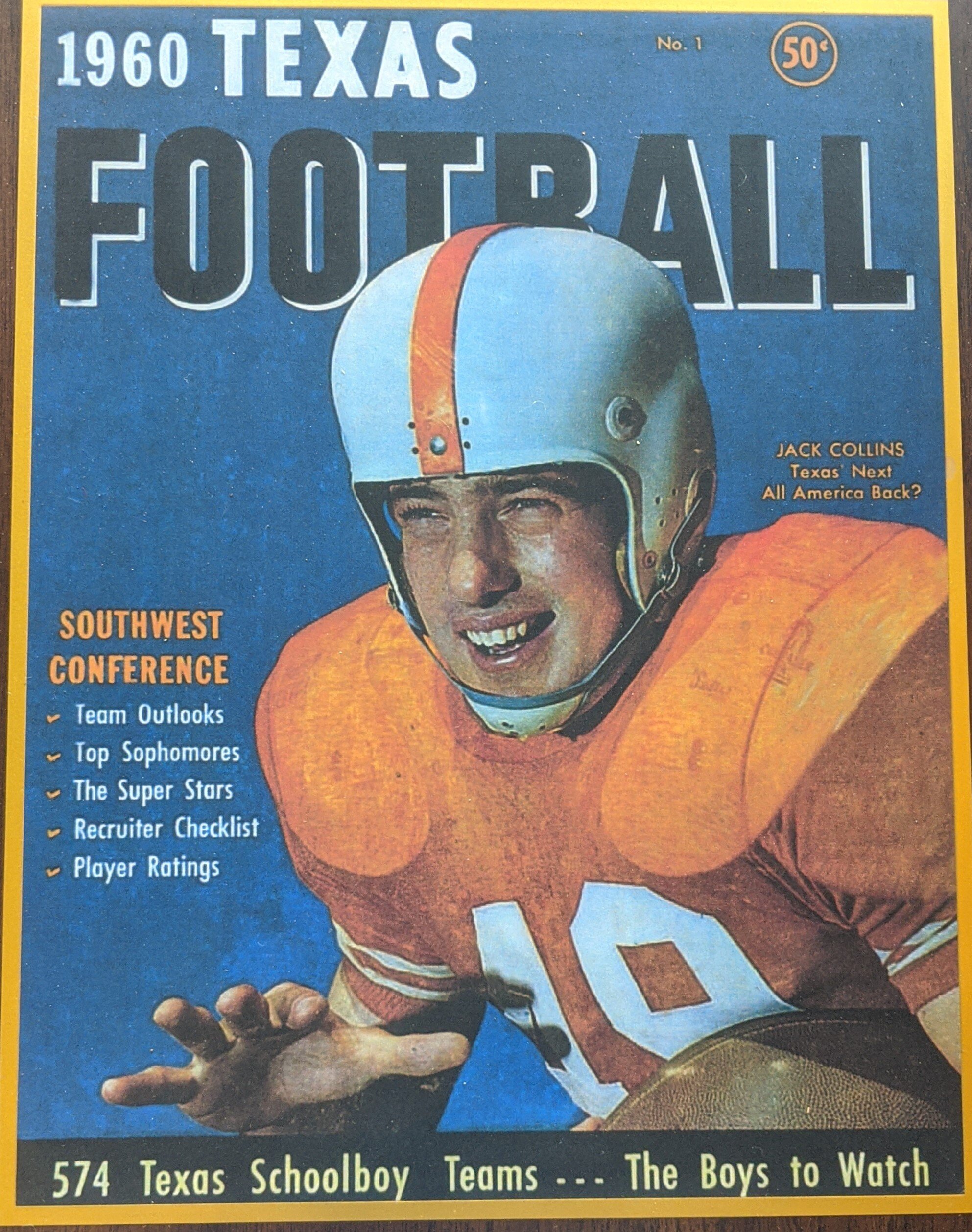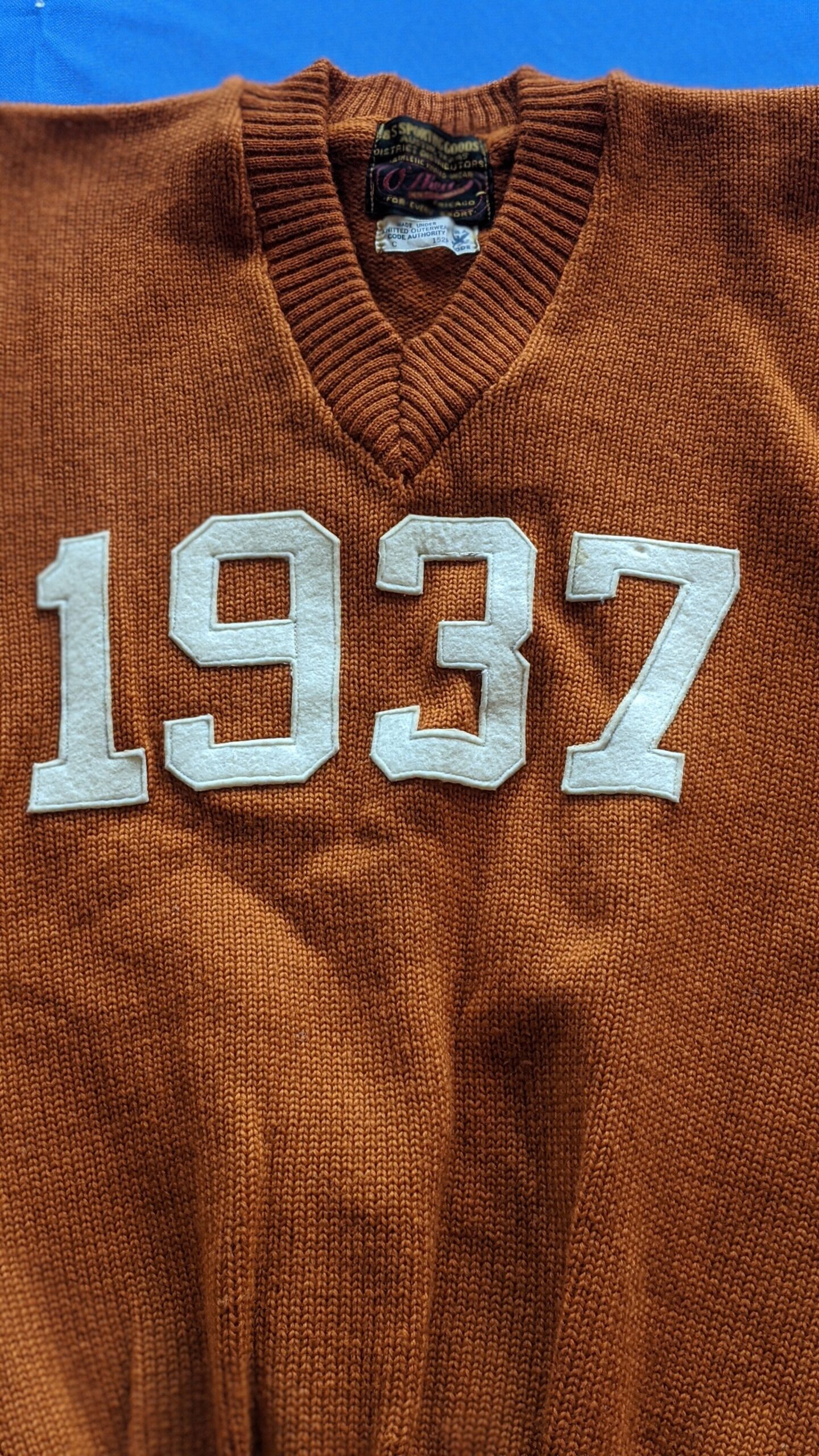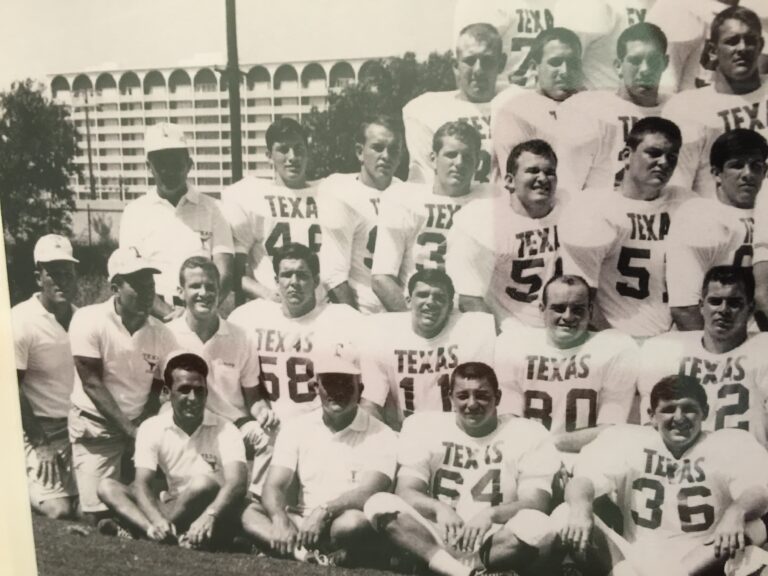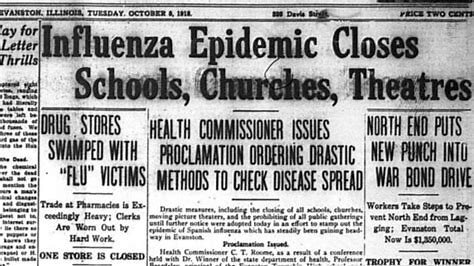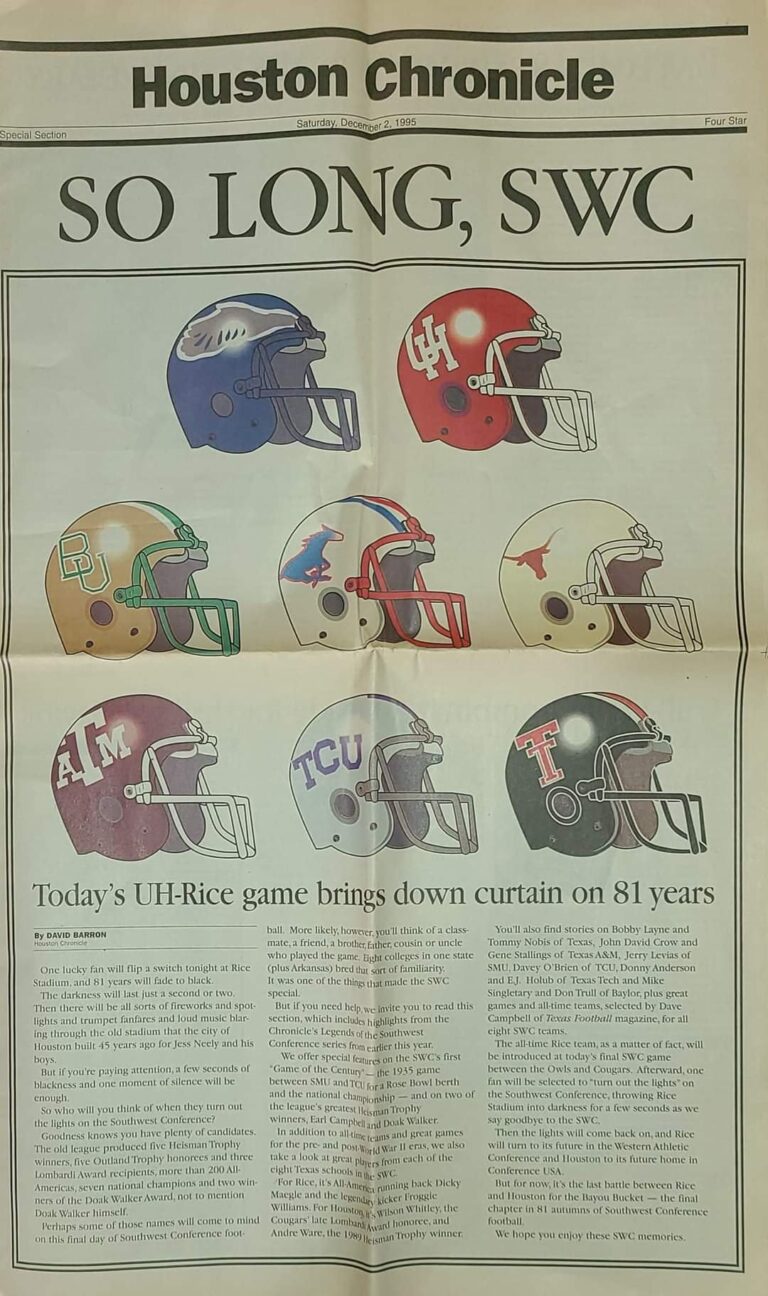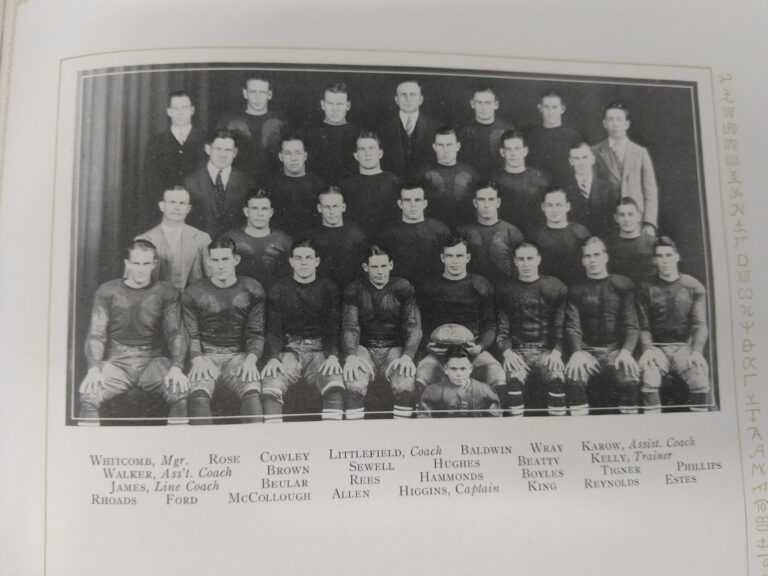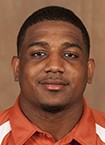Royal’s 80th birthday
“I don’t care about my gas and oil, as long as I’ve got my Darrell Royal, sitting on the dashboard of my car.” (from the article. It was the feature article in Sports Illustrated with UT on the cover.
1963 – Edith shares a part of Royal that few knew.
07.06.2012 | Football
Bill Little commentary: A Birthday and a Mexican dinner
Bill Little, Texas Media Relations
Of all the words in the English language, the word “unique” is rare. It is rare because it requires, nor will it accept, no surrounding superlatives. You can’t say “very unique,” “so unique,” or even “extremely unique.” Unique is, well, unique.
Photos are from DKR’s 80 birthday celebration not his 88th.
The subject came up a couple of times Friday as a group of about 50 former players gathered to celebrate the 88th birthday of their coach, Darrell Royal. With each moment and each comment, Royal’s impact on their lives—and the lives of all those associated with the University of Texas football program—was a reminder of a meaning and a strength that transcends years.
The flowers on the counter in Matt’s El Rancho’s party room further emphasized the occasion, as the restaurant, which has been so connected to Longhorn athletics for all these years, prepared to celebrate its 60th birthday on Saturday.
Mack Brown had started the day for Darrell and Edith Royal with a good-wishes phone call from his house in the mountains of North Carolina. President Bill Powers was rushing from a meeting to try to arrive in time.
Players who spanned an era of Texas football from 1957 through 1976 each spoke briefly. Former Longhorn quarterback T Jones was there, thanking Royal for hiring him as a 26 year old assistant coach when he came to Texas in December of 1956. Fred Akers, who joined Royal’s staff as an assistant in 1966 and later returned as the Longhorns’ head coach himself, thanked Royal for plucking him from the ranks of high school coaches and “giving me a chance to become a college coach.”
With only a handful of exceptions, the men in the room had either played or coached for Royal during one of the most successful runs in the history of college football. But to many, he had been more than a coach.
“It may be your birthday,” said Jim Bob Moffett (who played on Royal’s first teams), “but to us, it is a little like Father’s Day. Because you have been like a father to a lot of us.”
As the sun bathed the courtyard of the restaurant beyond the latticed windows, the clock turned back. For Royal, it was a celebration of a variance of “family.” Many of these same men, including former basketball assistant coach Eddie Oran, see Royal on a regular basis. They follow a schedule, taking turns taking him to lunch. There’s a table at a restaurant near the facility where he and Edith live that’s available daily for him to drop in for a meal or a cold beverage.
Friday’s gathering was also the anniversary of another Texas tradition. It was 50 years ago, in the summer of 1962, when Royal and a local sporting goods salesman named Rooster Andrews introduced the modern football world to the uniform color of burnt orange.
Urban legend would eventually suggest that Royal, who was known for his affinity for running the football, created the color to deceive opponents because of the similar colors of the new home jerseys and the leather footballs. Nothing, Royal said Friday, could be further from the truth.
Ronnie Landry, an offensive lineman in the 1960s who was a freshman in 1962, remembers a couple of varsity players modeling the jerseys. Pat Culpepper, who was a star senior linebacker, remembers nothing close to the stir caused by some of the new uniforms of today.
The truth is, Royal had tired of the orange color which Texas had been wearing since World War II. It was a darker version of the light orange worn by Tennessee, and no one manufacturer seemed to be able to match the color year after year.
That was what prompted Royal to ask Rooster to research the color, and when he did, he came to realize he was seeking something that had already been created.
In 1928, Texas coach Clyde Littlefield had sought a resolution of a problem with the school colors. The orange dye used at the time tended to fade when washed, thus reducing it almost to a lemon yellow color. Thus came the derogatory term “Yellow bellies” to describe the proud Longhorn players. Littlefield went to a friend in the garment business in Chicago, and together they created the burnt orange color and it was officially named “Texas Orange.”
That was the color Texas wore until the 1940s. It seems the dyes used for the dark orange color came from Germany, and during World War II that wasn’t available. So the lighter orange had to suffice, until Royal and Andrews stepped in.
“I was looking for something that would be only ours,” Royal said Friday. “Besides, it was our original color.”
When the Longhorns take the field in September to open the 2012 season, it will have been 50 years since the burnt orange color arrived on the college football landscape. The myth about the color of the football still surfaces from time to time, but there are some interesting figures in that regard. The Longhorns, of course, wear the orange jerseys at home, as well as in some bowl games and as the home team every odd year against Oklahoma in Dallas.
During the first three years Texas wore the new jerseys, from 1962 through 1964, Texas was 15-2 (with a win over Roger Staubach and Navy in the Cotton Bowl) while wearing orange, and 15-0-1 (with a win over Joe Namath and Alabama in the Orange Bowl) while wearing white.
In the ten years between 1962 and 1971, the Longhorns were 49-12-1 in orange and 39-6-1 in white, and Royal was named coach of the decade by ABC-TV. So much for the theory of deceptive trade practices.
As Royal posed for pictures with legendary players such as James Street and Bill Bradley and the noon luncheon began to drift into the remains of the work day on a hot July 6 afternoon, Royal thought of one more thing about the jerseys that pretty well summed up them, and him.
“I wanted,” he said, “for it to be unique.”
And that, without superlatives, is Darrell Royal at 88.
